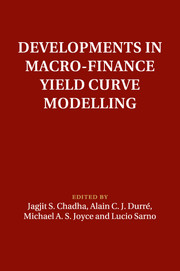Preface
Published online by Cambridge University Press: 05 February 2014
Summary
The monetary transmission mechanism relies heavily on the impact of the current level and expected path of policy rates on longer term interest rates paid on government liabilities and a wide constellation of retail and wholesale borrowings. It is mostly this transmission of interest rates along the maturity and risk spectrum that gives monetary policy its traction on the wider economy. And yet much of this transmission was assumed away in many macroeconomic models used prior to the economic crisis: often, even those who modelled the links did not necessarily develop models in which longer term interest rates reflected liquidity or default risk. The problems of this assumption emerged with some force as the evolving financial and sovereign debt crisis in the euro area brought to the fore the intimate relationship between the macroeconomic economy and the financial system. In turn, policymakers have had, in turn, to rethink many assumptions that have been made about the relationship between the state, monetary policy and the financial sector. The extensive and persistent use of near zero interest rates at the short end of the term structure has significantly reawakened research and policy interest in the link between the yield curve and the macro economy.
The development of extraordinary policies such as quantitative and credit easing, as well as extended open market operations such as Operation Twist, have been designed to alleviate premia in longer term interest rates. And yet we remain at some distance from understanding the impact of signalling and purchases on many key interest rates.
- Type
- Chapter
- Information
- Developments in Macro-Finance Yield Curve Modelling , pp. xxiii - xxivPublisher: Cambridge University PressPrint publication year: 2014



